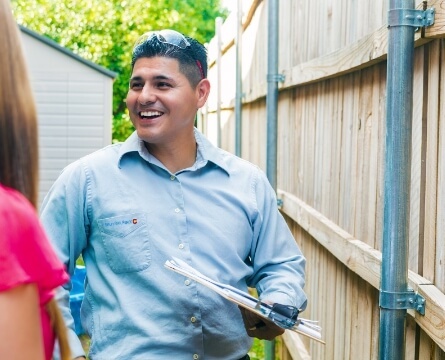- Fence Installation 101
Mistakes to Avoid When Building Your Fence Along the Front Range
Just as with other home improvement projects like remodeling and landscaping, there’s a lot that can go wrong with a fence installation if you jump in unprepared. While the budget needed for a fence installation is relatively modest compared with other home investments, nobody wants to spend more money and time than is necessary. Knowing these common mistakes will help you get it right the first time when building a fence for your Colorado property.
Just as with other home improvement projects like remodeling and landscaping, there’s a lot that can go wrong with a fence installation if you jump in unprepared. While the budget needed for a fence installation is relatively modest compared with other home investments, nobody wants to spend more money and time than is necessary. Knowing these common mistakes will help you get it right the first time when building a fence for your Colorado property.
Not Thoroughly Researching Fence Types
Buyer’s remorse is real, and it doesn’t just apply to purchasing items like fancy FIATs. In such a situation, the consumer most often won’t regret buying a car (he still needs to get from point A to point B); he’ll merely regret buying that particular car.
The same holds true for fencing—you do need a fence, but you want to carefully assess which fence you want. First, consider your primary purpose for installing a fence (privacy, safety, decoration, etc.). Then research the primary advantages and uses of each fencing type such as cedar, vinyl, Trex, rail, iron, chain link, masonry; as well as their maintenance requirements.
Finally, don’t forget to research the quality of your seller and installer. Remember that buyer’s remorse can just as easily apply to under spending as overspending, so don’t buy a fence that’s doesn’t satisfy your needs just to save some change.
Not Checking HOA and Zoning Restrictions
Before you become too invested in the idea of installing a specific type of fence, be sure to check HOA and zoning restrictions. There may be limitations on the material, height, and location of your fence, both for private and commercial properties.
Related: What is Sprinkler Insurance (and Why do I Need it?)
Not Discussing the Project with Neighbors
At first glance, this mistake may sound a little odd. After all, if the fence is on your property, why should your neighbor care? From a relational standpoint, however, it’s often smart to involve your neighbors in the process of building a fence, even if that means merely telling them that you’re having it installed, when, and why. Taking the trouble to communicate on such a basic level can work wonders in preempting potential offense and preserving neighborly harmony.
Doing it Yourself
There’s been an exciting movement encouraging DIY projects in recent years, and it has served to foster creativity and independence in many areas. Every trend, however, should be adopted in moderation, and DIY initiatives in particular are better undertaken when you thoroughly understand the expertise needed to see projects through in a quality manner.
When it comes to fencing, there are multiple complexities and complications, and you may be surprised by how easy it is to mis-measure, order the wrong materials, not know how to install on an incline or with impediments in the fence path, etc. Here is a Guide to DIY Fence Installation: How to Put up Your Own Fence.
Additionally, you’ll of course need to purchase or have access to tools that will, for instance, enable you to dig a fence post deep enough to make it stable. Due to the multiplicity of such intricacies, you’ll often save yourself a headache by hiring a professional and competent contractor with a well-established work history.
Choosing the Wrong Contractor
Not all fencing companies are created equal. Make sure you thoroughly research your fencing contractors, and choose a contractor who cares for the community, as well as your fence and your home goals.

